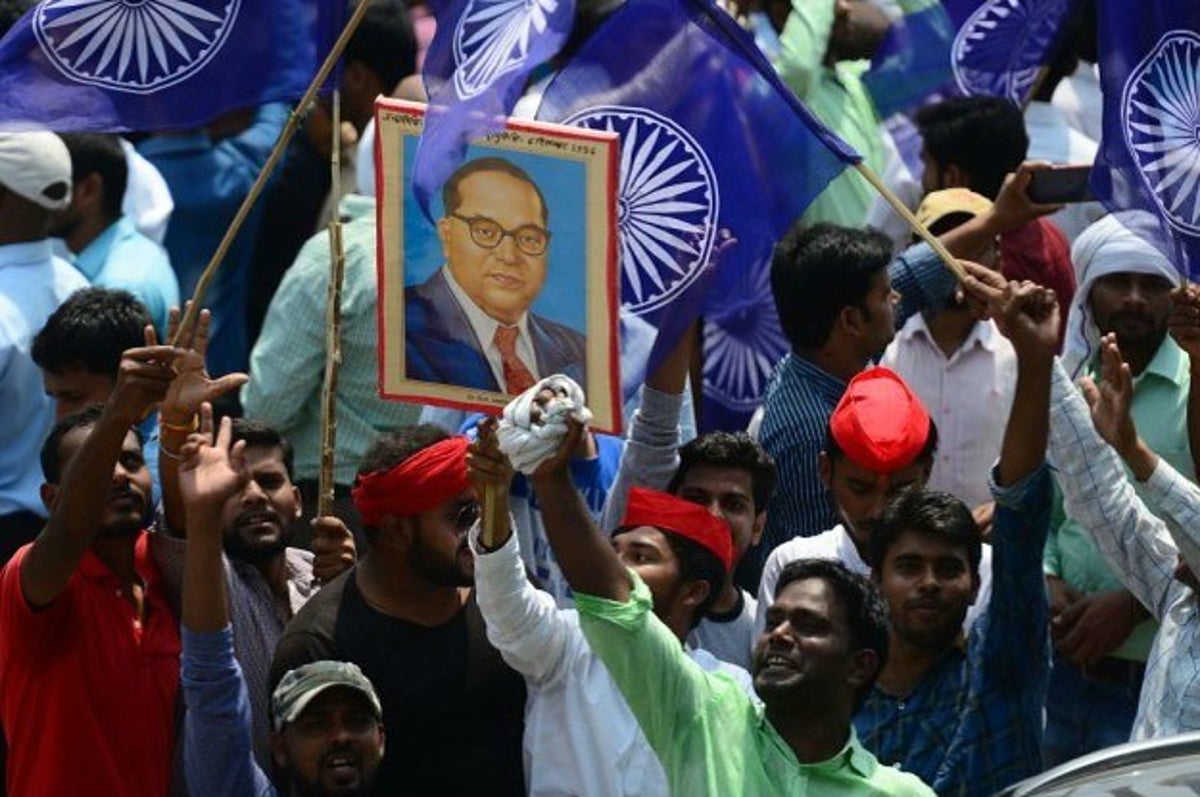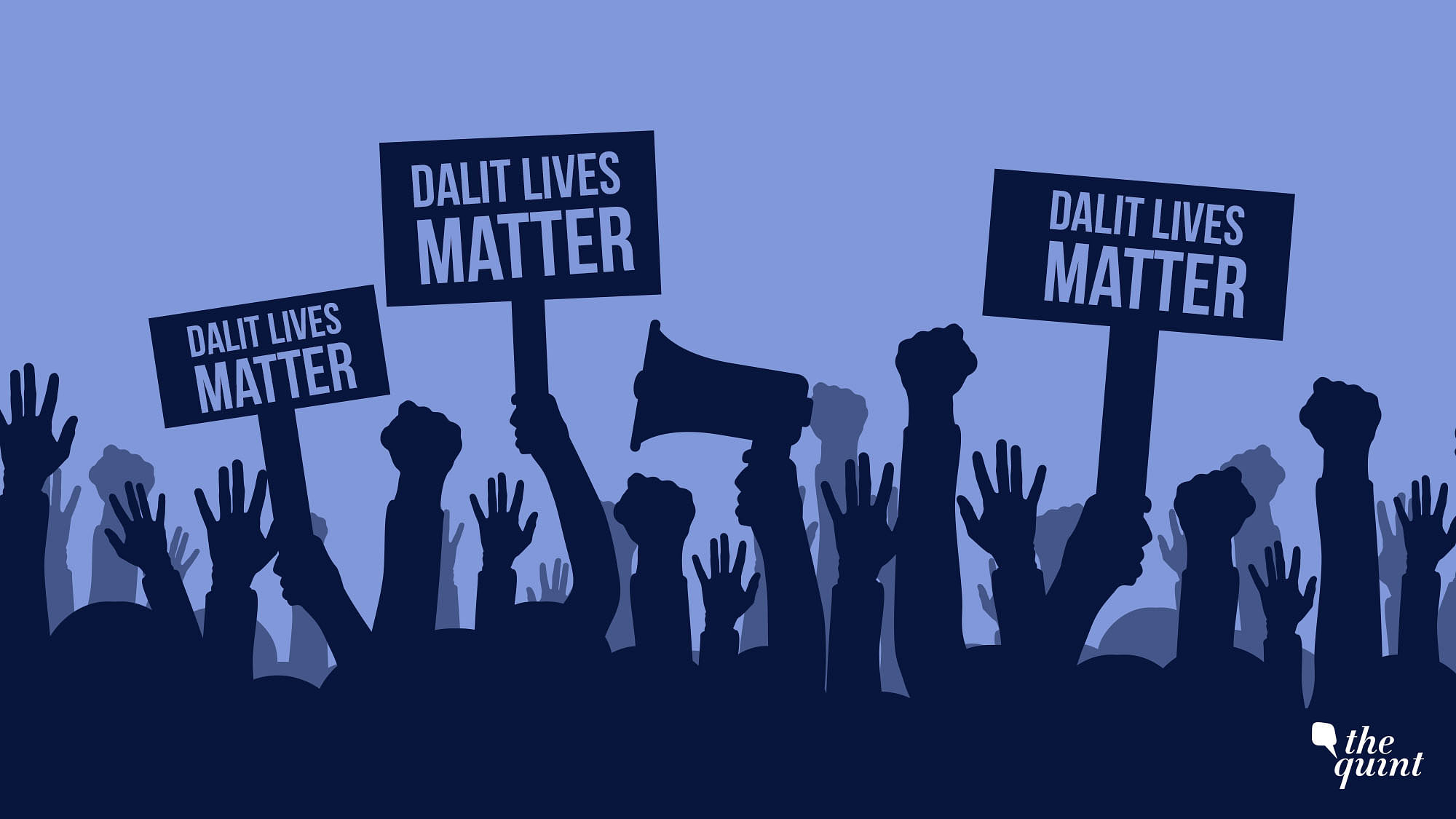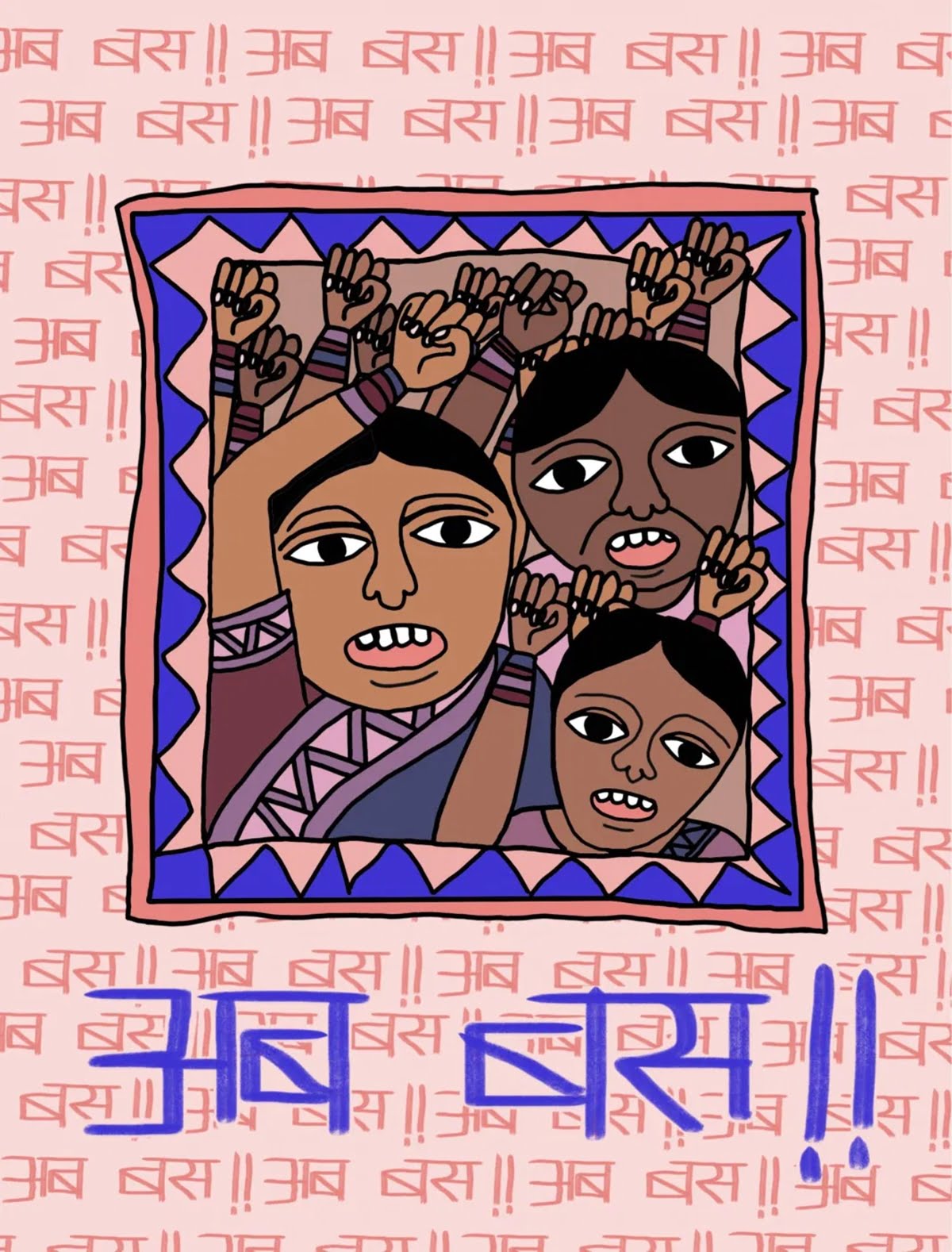There are umpteen ways in which caste privilege advances the careers of the so-called upper caste “influencers” – a reel of oppressor caste “influencers” reading out data of caste-based crimes while dancing to pop music. A reel recorded by another with their manicured hands, berating carpentry, a profession which primarily engages Bahujans.
A video uploaded by a “Desi” Indian American “influencer” on #blacklivesmatter. Ironically, following her previous post captions, one can find instances where she proudly proclaims how her grandfather has specifically asked her not to “spoil the family blood“. Another one posted by an oppressor caste “influencer” derisively asking people, “Why are they so underdressed?“, without taking into account how fashion-sense also depends on available resources.
One more reel by an “influencer” taking up space in the West by speaking about brown representation and then making anti-reservation comments through the same profile. Yet another post making a false charge of embezzlement on her domestic worker, without any proof.
These are some of the myriad ways in which these “influencers” use performativity to falsely portray themselves as victims, or worse – progressive and philanthropic. The equilibrium between the two, forms the perfect recipe for peak influencer culture in our digital spaces.
Be it Twitter where casteist hashtags trend, be it Facebook where caste-superiority groups run unchecked, or be it Instagram where anti-reservation reels have thousands of likes; social media is not “casteless” as those with caste-privilege would like to believe. The superficial performativity and dereliction from duty manifested by the oppressor caste “influencer” culture is proof enough to depict how the digital reality of casteism is an extension of casteism in the physical world

Why do “influencers” comprehend white privilege but not caste privilege?
The first part of the Mandal Commission Report (Report Of The Backward Classes Commission) deliberates on “a serious fallacy regarding the nature of merit“. It states – “In fact, what we call ‘merit’ in an elitist society is an amalgam of native endowments and environmental privileges… The conscience of a civilised society and the dictates of social justice demand that ‘merit’ and ‘equality’ are not turned into a fetish and the element of privilege is duly recognised…”
The initial push in an influencer’s career comes from having socio-economic capital in the society. If dominant caste influencers take a look at the history of their castes; they would know that their family wealth has been earned by exploiting Bahujan lives and labour.
The same “influencers” who buy fashionable clothes from their “pocket money“, record videos on phones “gifted” by their family, in inherited houses, built on exploited Bahujan sweat; do not build anything “from scratch“. Merit then, is a privilege on display. The same influencers grasp the privilege that comes with being white, but vehemently deny the privilege that their surnames provide.

“Since the white government bureaucrats are mostly in a stupor due to their life of luxury, they have no time to get any information about the true condition of the farmers, and their overall carelessness allows Brahman employees to dominate all the government departments. Because of these reasons, the farmers are so much looted that they have no bread to fill their stomachs or clothes to cover their bodies.” Mahatma Jotirao Phule writes in Shetkaryaca Asud (The Whipcord of the Cultivators).
English in India has hitherto been associated with eliteness, and not merely as a language to communicate. In several videos; these “influencers” portray themselves as compassionate by teaching the pronunciation of an English word to their domestic help by letting them, a marginalised individual hear the pronunciation through a stethoscope.
Additionally, sundry influencers use tactics to increase views by involving the marginalised in their reels or photoshoots without paying them. While the influencers would like us to believe that they are showing unity with the oppressed, the reels and photographs through their increased contrasts and aggravated color palette focus on the accentuated “aesthetics” of the influencer, while making sure that the marginalised are made to appear as more destitute and duskier
Indeed, these things might be a matter of wonder for the marginalised. But that is because of an oppressive system denying them access, and not a lack of inherent intellect. Numerous videos of oppressor caste women engaging in such demeaning and infantilising acts have been doing the rounds. The casteist, capitalist nexus denies education to marginalised women and creates constant displacement without any reparations.

Consequently, Bahujan women are put in a vulnerable position. Data shows that 82 per cent, 81 per cent, and 64 per cent female migrant workers from the ST, SC, and OBC communities, respectively, are engaged in professions such as domestic work, construction work, and brick kiln work.
To first snatch the slate, and then to glorify oneself for infantilising and teaching the pronunciation of an exotic fruit or complicated word, is toxic at best and criminal at worst.
Additionally, sundry influencers use tactics to increase views by involving the marginalised in their reels or photoshoots without paying them. While the influencers would like us to believe that they are showing unity with the oppressed, the reels and photographs through their increased contrasts and aggravated color palette focus on the accentuated “aesthetics” of the influencer, while making sure that the marginalised are made to appear as more destitute and duskier.
Also read: Casteist Instagram: ‘Influencers’ Create Content Deriding Domestic Workers
Why do most “influencers” belong to the oppressor castes?
Most “influencers” tend to have “similar” surnames, connecting them to a specific caste location in the society. The majority of them do not belong to SC, ST, OBC, NT or DNT communities. While Bahujans who grow up on the ground reality might be having multitudinous aspirations; for those who would want to become a makeup or travel influencer; the opportunities are negligible because of the paucity of inherited resources and surname-based networks, as well as the missing entitlement which comes from belonging to a certain caste location.
From flagrantly flaunting Brahmanical facial features, to making videos doing caste-pride rituals with their pets, to self-proclaimed “progressive poets” making reels about surname-pride sisters; casteism masquerading as “content” knows no bounds when propounded by these “influencers“.

Furthermore, given the elitist background these influencers grow up in, the company they keep, and the negligible conscience and inundated entitlement they possess, they seem to be living in an entirely different world. A world which let alone fights; refuses to even notice day-to-day discrimination and violence.
No wonder then, that some of them have the audacity to claim that every individual has “24 hours in a day“. This is a fundamentally wrong statement in a world where some have to travel by local trains to reach their workplace, losing hours in transit, some others have million-dollar companies handed down to them from family, and some have to walk miles to school and that too, barefoot in exceedingly rough terrains.
Awards for less than bare minimum, no alteration of status quo
While activists, writers, workers, and artists from the Bahujan communities are being punished everyday for their revolutionary work, it is these oppressor caste “influencers” who receive awards, money, and recognition for doing less than the bare minimum. Through this, the wealth is willfully and wrongfully retained within elite circles.
The statement “I acknowledge my privilege” has become the latest upholder of privilege. That is because while it accepts the presence of wrongfully acquired privilege; it does nothing to create a more equitable scenario. In the absence of the latter, this statement only sounds like a proponent of the presence of privilege and not a force challenging it
Self-proclaimed ‘progressive portals‘ claim to make ‘inclusive‘ lists and put either one or two names from the marginalised backgrounds in them for tokenism. Firstly, there is no apt representation without representation in proportion to population. Secondly, when making lists, such portals do not take into account individual journeys.
There is a colossal chasm between the trials, tribulations, hate, abuse, and paucity of financial, as well as social resources that a Bahujan, especially Bahujans belonging to oppressed genders and sexualities are made to go through.

The statement “I acknowledge my privilege” has become the latest upholder of privilege. That is because while it accepts the presence of wrongfully acquired privilege; it does nothing to create a more equitable scenario. In the absence of the latter, this statement only sounds like a proponent of the presence of privilege and not a force challenging it.
Casteism has been so normalised that it is treated as a social custom and not as a crime, and a bare minimum acceptance of crime does nothing to prevent it.
Performativity, appropriation, stealing, and invisibilising Bahujan labour
Another imperative aspect is how oppressor-controlled and owned clothing and jewelry businesses brazen-facedly appropriate Bahujan artforms. From creating neckpieces that imitate the indigenous art of tribal communities without crediting them, to exploiting marginalised women for the handprinted fabric they create without even paying them minimal wages; social media “influencers“, and their self-proclaimed “thrift pages” constantly accelerate casteism.

While several individuals and organisations have been trying to hold informed political discussions in online spaces, it is through paid advertisements using financial privilege, that the oppressor caste influencers have been forcibly popping up their problematic “content” on social media feeds. In either case, the burden of proof should not be on the oppressed.
Be it Twitter where casteist hashtags trend, be it Facebook where caste-superiority groups run unchecked, or be it Instagram where anti-reservation reels have thousands of likes; social media is not “casteless” as those with caste-privilege would like to believe. The superficial performativity and dereliction from duty manifested by the oppressor caste “influencer” culture is proof enough to depict how the digital reality of casteism is an extension of casteism in the physical world.
Also read: Social Media Influencers: Serving Classism, Selective Feminism & Monolithic Nationalism
Featured Image Credit: Sunidhi Kothari/Feminism In India
About the author(s)
Ankita Apurva was born with a pen and a sickle.





